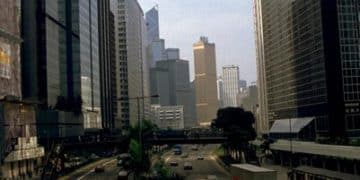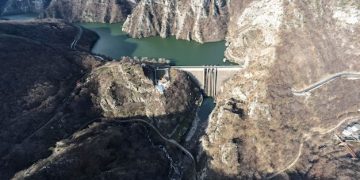Investing in Peru’s Renewable Energy: Risks & Rewards Under New Leadership

Investing in Peru’s renewable energy sector under the new government presents both potential risks and rewards, including policy uncertainties, market competition, and project financing challenges, balanced by opportunities for high returns, sustainable development, and contributing to Peru’s energy transition goals.
Peru’s renewable energy sector is drawing increased attention from global investors. So, what are the potential risks and rewards of investing in Peru’s renewable energy sector under the new government? Understanding these dynamics is crucial for making informed investment decisions.
Understanding Peru’s Renewable Energy Landscape
Peru has significant potential for renewable energy development due to its abundant natural resources, including solar, wind, hydro, and geothermal energy. The nation’s energy matrix is undergoing a transformation, driven by environmental concerns and the need for energy diversification. But what makes Peru unique in the Latin American scenario?
Current State of Renewable Energy in Peru
Peru’s renewable energy sector has seen considerable growth over the past decade, with various projects coming online. These projects range from large-scale solar and wind farms to smaller hydro and biomass plants. Government policies have played a crucial role in driving this growth.
Government Policies and Regulations
The regulatory framework in Peru has been evolving to support renewable energy investments. Key policies include feed-in tariffs, tax incentives, and renewable energy auctions. However, policy changes under the new government can introduce uncertainties for investors.
- Feed-in tariffs incentivize renewable energy production by guaranteeing a set price for electricity.
- Tax incentives reduce the financial burden on renewable energy projects.
- Renewable energy auctions promote competition and drive down costs.
Peru’s commitment to reducing carbon emissions and diversifying its energy sources is evident in its national energy plans. These plans outline specific targets for renewable energy deployment, providing a roadmap for investors.
Potential Rewards of Investing in Peru’s Renewable Energy
Investing in Peru’s renewable energy sector offers several potential rewards. These include high returns on investment, contributing to sustainable development, and benefiting from favorable market conditions. Let dive into each one.

High Returns on Investment
Renewable energy projects in Peru can offer attractive returns on investment due to the country’s growing energy demand and favorable regulatory environment. Projects that are well-managed and strategically located can yield significant profits.
Contributing to Sustainable Development
Investing in renewable energy supports Peru’s sustainable development goals by reducing reliance on fossil fuels and mitigating climate change. This can enhance a company’s reputation and attract socially responsible investors.
- Reduced carbon emissions contribute to global climate change mitigation efforts.
- Diversification of energy sources enhances energy security.
- Creation of local jobs boosts economic development in rural areas.
Peru’s geographical diversity and resource abundance make it an ideal location for various renewable energy projects. This diversity reduces the risk of relying on a single energy source.
Potential Risks of Investing in Peru’s Renewable Energy
Investing in Peru’s renewable energy sector also involves several potential risks. These include policy uncertainties, market competition, financing challenges, and social and environmental considerations. Here’s a breakdown:
Policy and Regulatory Risks
Changes in government policies and regulations can significantly impact the profitability of renewable energy projects. Investors need to be aware of potential policy shifts and their implications.
Market Competition
The renewable energy market in Peru is becoming increasingly competitive, with both domestic and international players vying for projects. This competition can drive down prices and reduce profit margins.
- Increased competition from established energy companies.
- Potential for price wars in renewable energy auctions.
- Need for innovative strategies to differentiate projects.
Investors should conduct thorough market research to understand the competitive landscape and identify opportunities for differentiation. This research can help in developing strategies to secure projects and maintain profitability.
Financing Challenges in Peru’s Renewable Energy Sector
Securing financing for renewable energy projects in Peru can be challenging due to various factors. These include perceived risks, high capital costs, and limited access to financing options.
Access to Financing
Many renewable energy projects struggle to secure adequate financing from banks and other financial institutions. Investors may need to explore alternative financing options, such as private equity or green bonds.
High Capital Costs
Renewable energy projects typically require significant upfront capital investments. This can be a barrier for smaller developers or those with limited access to capital.

- Exploring public-private partnerships to share financial burdens.
- Seeking grants and subsidies from international organizations.
- Developing innovative financing models to attract investors.
Government support and incentives can play a crucial role in attracting private investment in renewable energy projects. Clear and consistent policies can reduce perceived risks and encourage financial institutions to lend.
Social and Environmental Considerations
Renewable energy projects can have both positive and negative social and environmental impacts. It is important for investors to consider these impacts and implement measures to mitigate any potential harm.
Community Engagement
Engaging with local communities is essential for ensuring the success of renewable energy projects. This involves consulting with communities, addressing their concerns, and providing benefits, such as job creation and infrastructure development.
Environmental Impact Assessments
Conducting thorough environmental impact assessments is crucial for identifying and mitigating potential environmental risks. This includes assessing the impact on biodiversity, water resources, and air quality.
- Implementing sustainable land management practices.
- Protecting endangered species and their habitats.
- Minimizing water usage and waste generation.
Investing in projects that prioritize social and environmental sustainability can enhance a company’s reputation and attract environmentally conscious investors. This approach can also lead to more resilient and successful projects.
Navigating the New Political Landscape in Peru
The new government in Peru introduces both opportunities and challenges for investors in the renewable energy sector. Understanding the government’s priorities and policies is crucial for navigating this new landscape.
Government Priorities
<
The government may have specific priorities related to renewable energy development, such as promoting energy access in rural areas or reducing reliance on fossil fuels. Investors should align their projects with these priorities to increase their chances of success.
Policy Changes
The new government may introduce changes to existing policies and regulations. Investors need to stay informed about these changes and assess their potential impact on their projects. Monitoring policy developments and engaging with government officials can help investors anticipate and adapt to these changes.
| Key Point | Brief Description |
|---|---|
| 💡Policy Risks | Policy shifts can impact project profitability. |
| 💰Financing | Securing financing can be a challenge. |
| 🌱Sustainability | Contributes to Peru’s sustainability goals. |
| 📈High Returns | Potential for high returns on investment. |
Frequently Asked Questions
▼
Peru’s abundant natural resources, growing energy demand, and government support make it an attractive destination for renewable energy investments.
▼
Policy risks include changes in feed-in tariffs, tax incentives, and regulatory frameworks under the new government.
▼
Investors can explore alternative financing options, such as private equity, green bonds, and public-private partnerships, to secure funding.
▼
Community engagement ensures projects are socially responsible and benefit local communities, enhancing project sustainability and acceptance.
▼
Investors should conduct thorough environmental impact assessments to mitigate potential harm to biodiversity, water resources, and air quality.
Conclusion
Investing in Peru’s renewable energy sector presents a complex mix of opportunities and challenges. By understanding the potential rewards and risks, navigating the new political landscape, and prioritizing sustainability, investors can make informed decisions and contribute to Peru’s energy transition goals.





